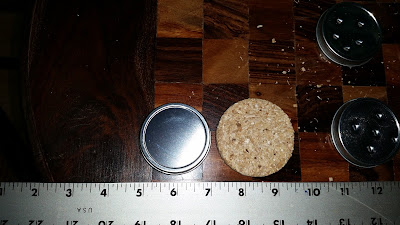Anyway, the pressure cooker arrived on Wednesday!
 |
| Front view of the Versonel Pressure Cooker box. |
 |
| Side view of the box |
I haven't really had a chance to play with my new toy yet, but I wanted to at least make sure it worked so I thought a few red potatoes I had laying around would make good test subjects. After cleaning the bowl with soap and hot water to remove any manufacturing residue I put in the potatoes and some water. The lid was placed on the cooker by lining up an arrow found on the lid with the corresponding one on the body, then turned clockwise until an audible signal (a series of tones going up in pitch) indicated that the lid was in position. I chose the "Soup/Stew" preset for no good reason. After pushing the button the indicator flashed for about 10 seconds before the display changed to "On". It took about 15 minutes for the water to start to boil and the red button on the lid to pop up indicating the pot was pressurized, once the programmed pressure was reached the display changed to a countdown timer. When the time had elapsed a signal sounded and it was time to release the pressure. To do so you just turn lever on the lid left or right, the steam shoots straight up so it's a good idea to place a dish towel on the lid if you have the pot sitting on a counter under cabinets. You also may want to move the lever with a fork or something to keep your fingers away from the escaping steam.
The potatoes turned out pretty good, the skin peeled off without much difficulty and I was able to mash the flesh easily with a fork. I've downloaded a bunch of free pressure cooker cookbooks from the Amazon Kindle store including this one, so after work today I'll come up with something to do over the weekend.
Looking at various Instant Pot models, the Versonel looks most like an IP-LUX60. I'm not sure if it the same hardware with slightly different cosmetics or if they made something that just looks like the more expensive Instant Pot out of sub-par hardware. Time will tell. One thing missing from the Versonel is the steaming rack that comes with the Instant pot, but the rack from my Avalon Bay Air Fryer fits pretty well. There is no recipe book included (although like I mentioned there are lots of free or very cheap ones available from the Kindle store on Amazon.com) and the manual doesn't really give you that much information. Luckily the controls look pretty intuitive so it should be pretty easy to learn how to use.
Counter space is getting a little sparse due to all the gadgets I have living in the kitchen, luckily this addition also works as a slow cooker so I'll be able to relegate the old crock pot to the garage or a closet somewhere.












































